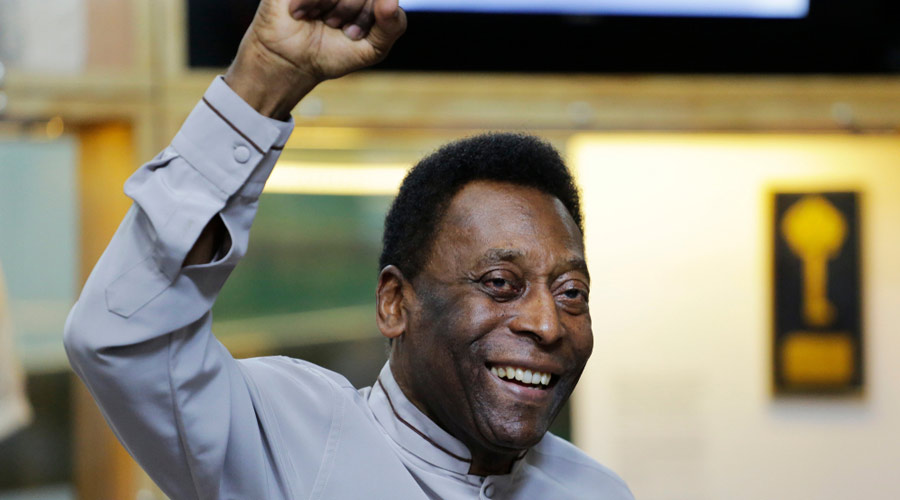Pelé, one of soccer’s greatest players and a transformative figure in 20th-century sports who achieved a level of global celebrity few athletes have known, died Thursday in São Paulo. He was 82.
His death, in a hospital, was confirmed by his manager, Joe Fraga.
A national hero in his native Brazil, Pelé was beloved around the world — by the very poor, among whom he was raised; the very rich, in whose circles he traveled; and just about everyone who ever saw him play.
“Pelé is one of the few who contradicted my theory,” Andy Warhol once said. “Instead of 15 minutes of fame, he will have 15 centuries.”
Celebrated for his peerless talent and originality on the field, Pelé (pronounced peh-LAY) also endeared himself to fans with his sunny personality and his belief in the power of soccer — football to most of the world — to connect people across dividing lines of race, class and nationality.
He won three World Cup tournaments with Brazil and 10 league titles with Santos, his club team, as well as the 1977 North American Soccer League championship with the New York Cosmos. Having come out of retirement at 34, he spent three seasons with the Cosmos on a crusade to popularize soccer in the United States.
Before his final game, in October 1977 at Giants Stadium in East Rutherford, New Jersey, Pelé took the microphone on a podium at the center of the field, his father and Muhammad Ali beside him, and exhorted a crowd of more than 75,000.
“Say with me three times now,” he declared, “for the kids: Love! Love! Love!”
In his 21-year career, Pelé — born Edson Arantes do Nascimento — scored 1,283 goals in 1,367 professional matches, including 77 goals for the Brazilian national team.
Many of those goals became legendary, but Pelé’s influence on the sport went well beyond scoring. He helped create and promote what he later called “o jogo bonito” — the beautiful game — a style that valued clever ball control, inventive pinpoint passing and a voracious appetite for attacking. Pelé not only played it better than anyone; he also championed it around the world.
Among his athletic assets was a remarkable center of gravity; as he ran, swerved, sprinted or backpedaled, his midriff seemed never to move, while his hips and his upper body swiveled around it.
He could accelerate, decelerate or pivot in a flash. Off-balance or not, he could lash the ball accurately with either foot. Relatively small, at 5 feet, 8 inches, he could nevertheless leap exceptionally high, often seeming to hang in the air to put power behind a header.
Like other sports, soccer has evolved. Today, many of its stars can execute acrobatic shots or rapid-fire passing sequences. But in his day, Pelé’s playmaking and scoring skills were stunning.
Early Success
Pelé sprang into the international limelight at the 1958 World Cup in Sweden, a slight 17-year-old who as a boy had played soccer barefoot on the streets of his impoverished village using rolled-up rags for a ball. A star for Brazil, he scored six goals in the tournament, including three in a semifinal against France and two in the final, a 5-2 victory over Sweden. It was Brazil’s first of a record five World Cup trophies.
Pelé also played on the Brazilian teams that won in 1962 and 1970. In the 1966 tournament, in England, he was brutally kicked in the early games and was finally sidelined by a Portuguese player’s tackle that would have earned an expulsion nowadays but drew nothing then.
With Pelé essentially absent, Brazil was eliminated in the opening round. He was so disheartened that he announced he would retire from national team play.
But he reconsidered and played on Brazil’s World Cup team in Mexico in 1970. That team is widely hailed as the best ever; its captain, Carlos Alberto, later joined Pelé on the Cosmos.
“I wish he had gone on playing forever,” Clive Toye, a former president and general manager of the Cosmos, wrote in a 2006 memoir. “But then, so does everyone else who saw him play, and those football people who never saw him play are the unluckiest people in the world.”
Edson Arantes do Nascimento was born Oct. 23, 1940, in Três Corações, a tiny rural town in the state of Minas Gerais. His parents named him Edson in tribute to Thomas Edison. (Electricity had come to the town shortly before Pelé was born.) When he was about 7, he began shining shoes at the local railway station to supplement the family’s income.
His father, a professional player whose career was cut short by injury, was nicknamed Dondinho.
(New York Times News Service)











